From open cockpits and roaring engines to futuristic hypercars smashing records, sports racing has always pushed cars beyond the limits of the day. But the influence of racing isn’t just confined to the track – it’s helped shape the very vehicles we drive today.
In this edition of Under the Hood, we’ll explore the evolution of sports racing and uncover how track-born innovations, from better brakes to smarter suspensions, have made their way into everyday cars.
The Early Days (1900s–1930s): Speed, Danger, and Innovation
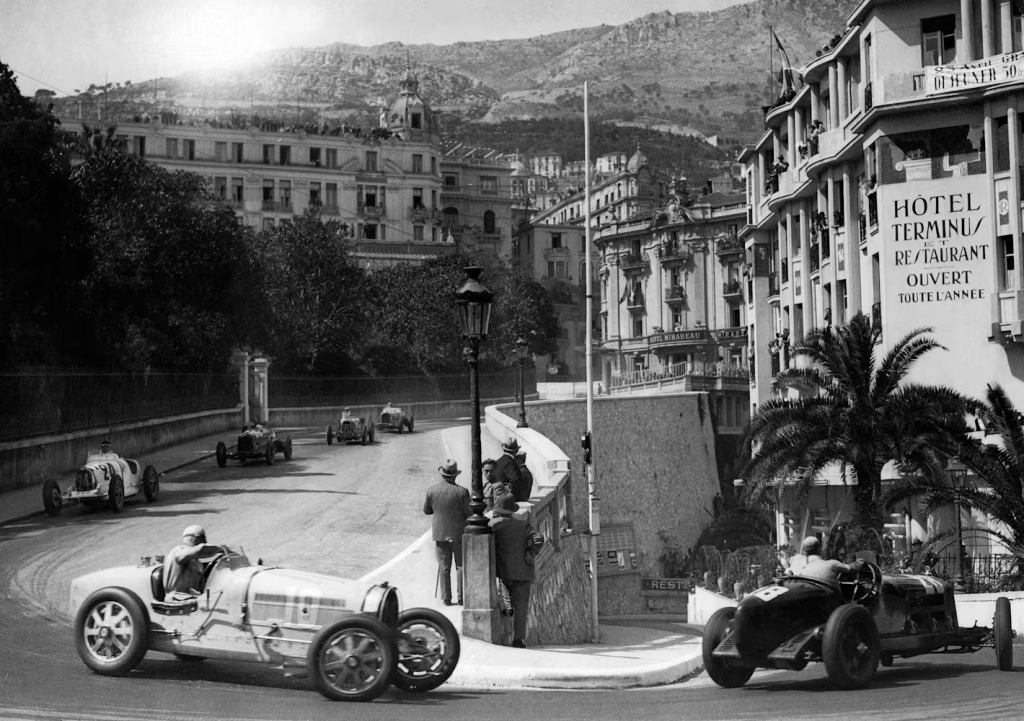
The 1933 Monaco Grand Prix was the first event of its kind. Provided by Motor Sport Magazine.
In the earliest decades of motorsport, racing was a raw test of bravery and mechanical endurance. Events like the Paris–Bordeaux race and the first Grand Prix challenged both car and driver, often over hundreds of miles of unpaved roads. No seatbelts, no helmets, and no pit crews – just open cockpits, hand-built engines, and the roar of unfiltered combustion.
In these formative years, manufacturers used racing to prove and refine their designs, driving innovation in engine reliability, suspension systems, and tire durability. Names like Bugatti, Alfa Romeo, and Bentley emerged as dominant forces, setting new standards for performance and prestige.
It was during this era that racing evolved from a thrilling spectacle into a proof of concept for automotive design.
Post-War Boom (1940s–1960s): Birth of Modern Racing
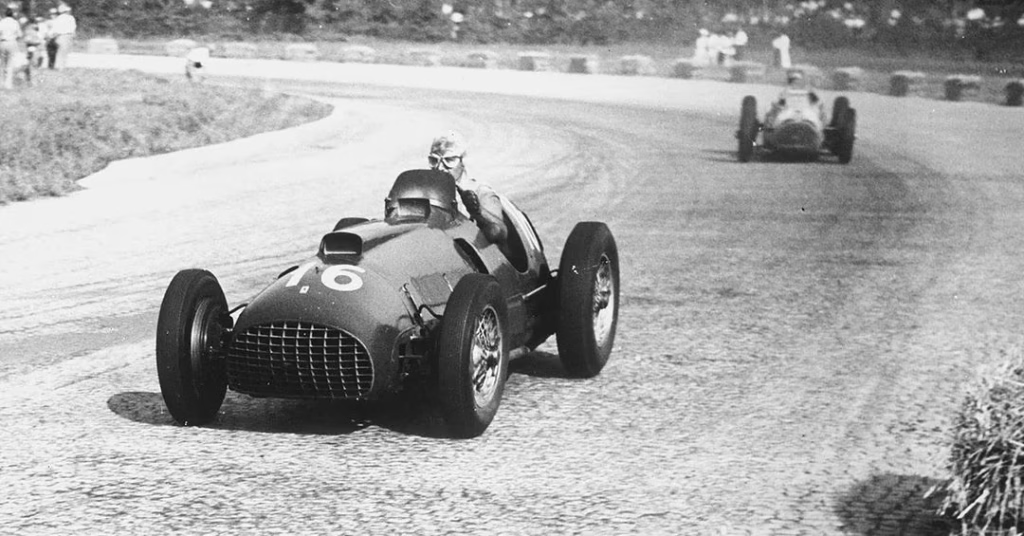
With the creation of Formula One in 1950, sports racing reached new heights. Provided by Ferrari.
After World War II, motorsport boomed. As car production ramped back up, so did the appetite for speed, and racing quickly became both a proving ground and a global spectacle. Formula One was created in 1950, bringing a new level of professionalism, engineering precision, and international attention to motorsports. Endurance races like the 24 Hours of Le Mans also gained prestige, pushing cars beyond prior limits.
This era saw rapid technical progress: disc brakes replaced drums, lightweight tubular frames improved handling, and engines became more powerful and refined. Racing was elevated from simply raw speed to efficiency, control, and innovation.
Legendary names like Ferrari, Jaguar, and Porsche rose to prominence, building their reputations on racetrack success. Their victories on Sunday translated into showroom buzz on Monday, with consumers eager to drive cars that shared DNA with championship winners.
The Turbo Era and Aerodynamics (1970s–1990s): Brains and Brawn
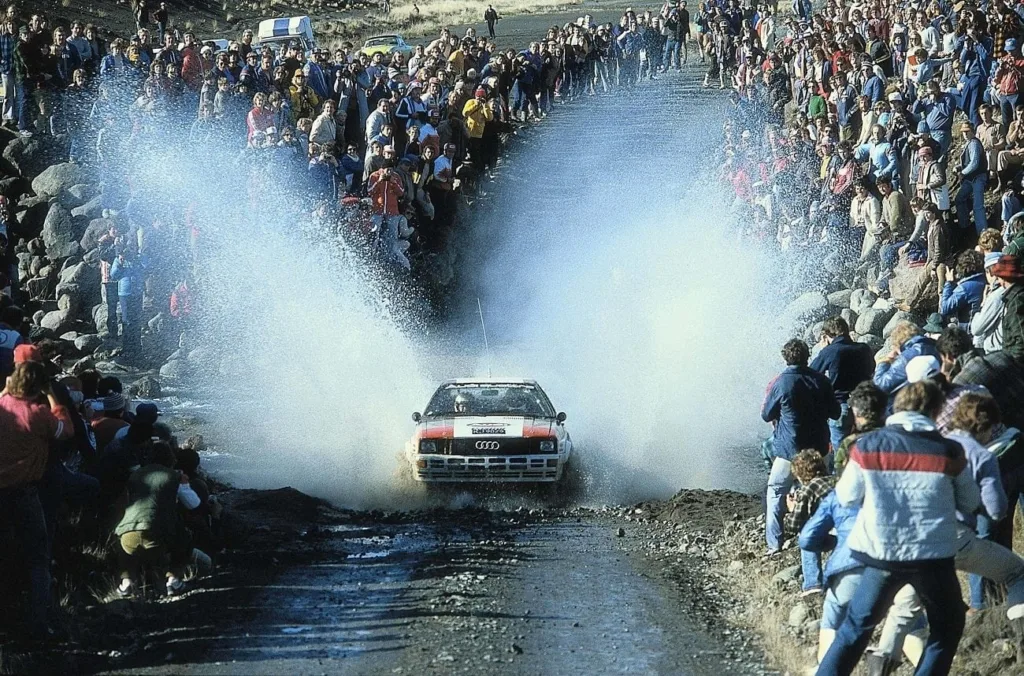
The Group B rally events of the 70’s provided a great deal of spectacle. Provided by Audi.
By the 1970s, racing had reached heights never seen before, with turbochargers in Formula One and endurance racing delivering massive power boosts from smaller engines. Aerodynamics became a new focus, with wings, spoilers, and ground-effect designs allowing cars to stick to the track with scientific precision.
This period also saw the rise of rally racing and touring car championships, closing the gap between motorsport and road cars even further. Group B rally, in particular, became legendary for its fire-breathing monsters that blurred the line between race car and street car… until the category was banned for being too dangerous.
Under the hood, materials like carbon fiber and Kevlar began replacing steel, increasing the maximum possible speed even further. Electronics crept in with early versions of traction control and computer-assisted tuning, laying the groundwork for the smart systems that are now ubiquitous in the modern era.
Digital Domination (2000s–2010s): Computers Join the Race
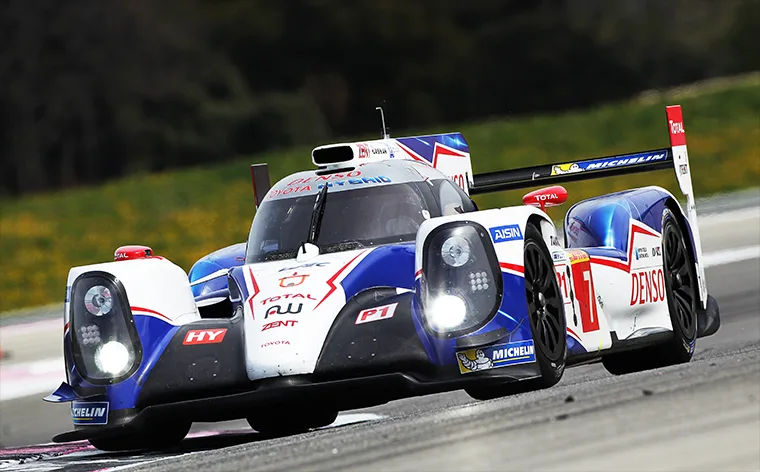
The Toyota TS040 Hybrid came third in the 2014 Le Mans Race. Provided by Toyota.
At the turn of the new millennium, racing entered the digital age. Telemetry, data analysis, and onboard computers became a core component of both race strategy and vehicle performance. Teams were now able to monitor every aspect of a car in real-time, from tire temperatures to engine output, and easily adjust them, often mid-race.
This era also saw the introduction of paddle shifters, advanced traction control systems, and hybrid powertrains, particularly in endurance racing. The Le Mans-winning prototypes from Audi, Toyota, and Porsche began combining combustion engines with electric motors, balancing speed and efficiency like never before.
Many of these features were incorporated into road cars, especially high-performance models. Launch control, dual-clutch transmissions, adaptive suspension, and customizable drive modes became standard on everything from hot hatches to supercars. The general public was now directly benefiting from the innovations of the speedway.
Today and Tomorrow: Electric Speed and AI on the Track
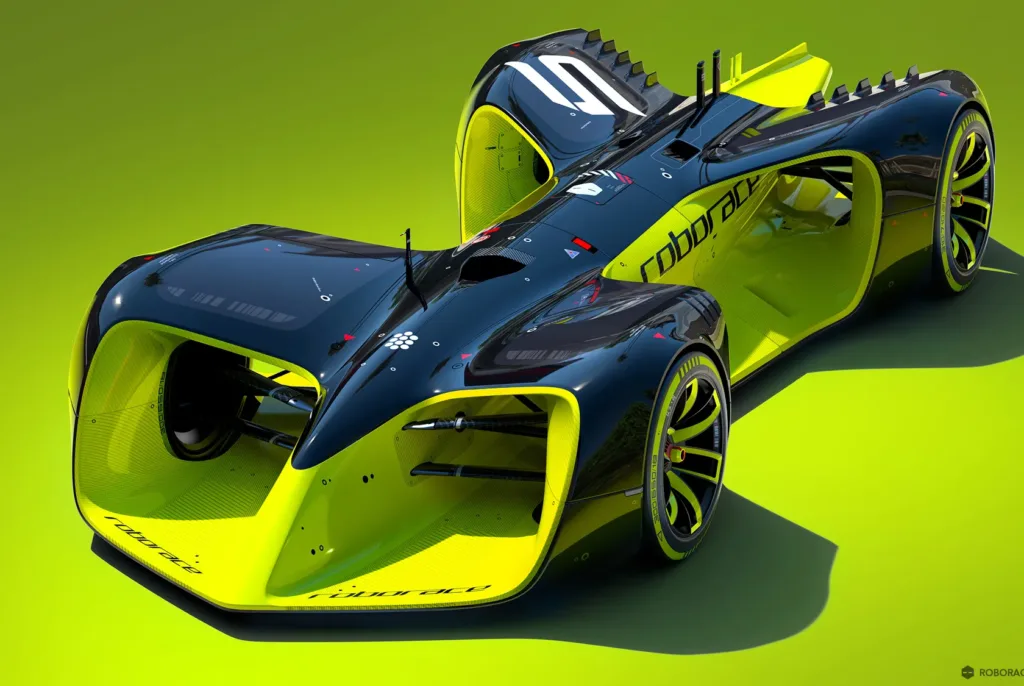
Roborace – the future of motorsport? Provided by The Verge.
In the modern racing world, electric motorsport, led by Formula E, is redefining performance, focusing on instant torque, energy efficiency, and software-based optimization. While traditional engines still dominate many racing series, electric and hybrid technology is quickly catching up.
Advanced driver-assist systems and AI-powered data modeling are now having a big impact, from pit strategy to real-time adjustments. Energy recovery systems (like KERS and ERS in Formula 1) store braking energy for extra power boosts, while tire and suspension data is constantly analyzed for predictive performance tuning.
Looking ahead, motorsport is doubling down on sustainability and smart systems, with synthetic fuels, AI-assisted driving, and even autonomous racing series (like Roborace) all possibilities.
As these technologies develop, many will find their way into consumer vehicles, much like disc brakes, paddle shifters, and hybrid systems once did.
What This Means for AutoBidMaster Buyers
From rally stages to racetracks, sports racing has profoundly influenced the cars we drive, and that influence is everywhere on AutoBidMaster’s auction listings. Whether you’re eyeing a salvaged sports coupe, a turbocharged hot hatch, or a performance-focused sedan, chances are, it carries racing DNA, even if not immediately obvious.
Here’s what to watch out for:
- Race-bred features: Turbochargers, sport-tuned suspension, launch control, paddle shifters, and performance brakes all have roots in motorsport. Even economy cars today may include technology that started on the track.
- Aftermarket upgrades: Many salvage performance cars come with racing-inspired mods, e.g., upgraded intakes, coilovers, or exhaust systems. Know what’s been upgraded, and whether it’s a bonus or a red flag.
- Track use and wear: Some high-performance vehicles may have seen serious use before ending up at auction. Check for signs of track wear, like brake rotor condition, tire mismatches, or aftermarket roll cages, and balance the potential against the cost of repair.
- Value for enthusiasts: Salvaged performance cars often come at a fraction of their market value, offering an affordable entry point for gearheads, tuners, or DIY rebuilders.
At AutoBidMaster, by buying a car, you’re also buying into a legacy of racing innovation. With a little know-how and some smart bidding, your next project or daily driver could carry the spirit of the racetrack under its hood.
Sources (accessed June-July 2025):
- Motorsport Magazine
- Le Mans Official Website
- Road & Track
- Car & Driver
- Wired
- Autocar
- Motortrend
- NHTSA
- Edmunds
Banner image provided by European Le Mans Series (July 2025)

